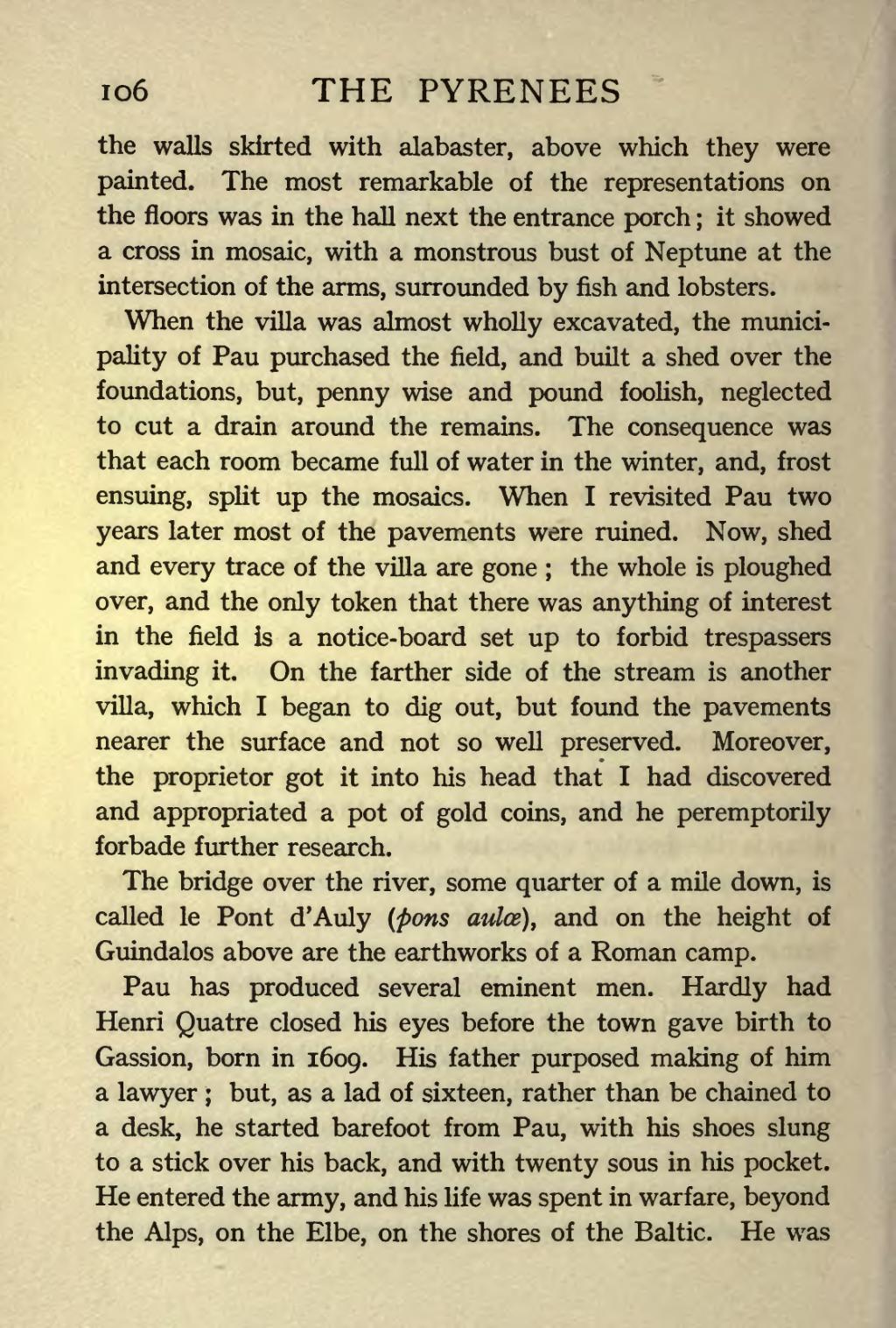the walls skirted with alabaster, above which they were painted. The most remarkable of the representations on the floors was in the hall next the entrance porch; it showed a cross in mosaic, with a monstrous bust of Neptune at the intersection of the arms, surrounded by fish and lobsters.
When the villa was almost wholly excavated, the municipality of Pau purchased the field, and built a shed over the foundations, but, penny wise and pound foolish, neglected to cut a drain around the remains. The consequence was that each room became full of water in the winter, and, frost ensuing, split up the mosaics. When I revisited Pau two years later most of the pavements were ruined. Now, shed and every trace of the villa are gone; the whole is ploughed over, and the only token that there was anything of interest in the field is a notice-board set up to forbid trespassers invading it. On the farther side of the stream is another villa, which I began to dig out, but found the pavements nearer the surface and not so well preserved. Moreover, the proprietor got it into his head that I had discovered and appropriated a pot of gold coins, and he peremptorily forbade further research.
The bridge over the river, some quarter of a mile down, is called le Pont d'Auly (pons aulœ), and on the height of Guindalos above are the earthworks of a Roman camp.
Pau has produced several eminent men. Hardly had Henri Quatre closed his eyes before the town gave birth to Gassion, born in 1609. His father purposed making of him a lawyer; but, as a lad of sixteen, rather than be chained to a desk, he started barefoot from Pau, with his shoes slung to a stick over his back, and with twenty sous in his pocket. He entered the army, and his life was spent in warfare, beyond the Alps, on the Elbe, on the shores of the Baltic. He was
